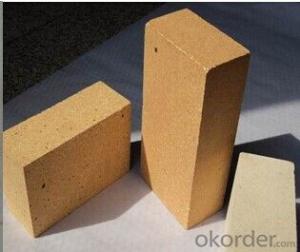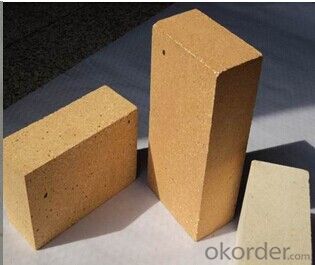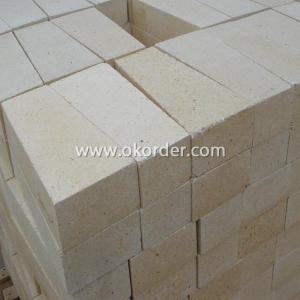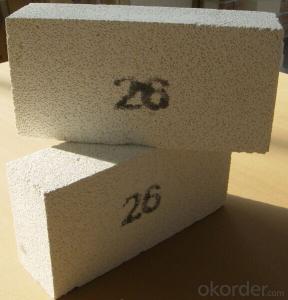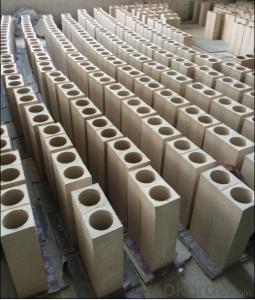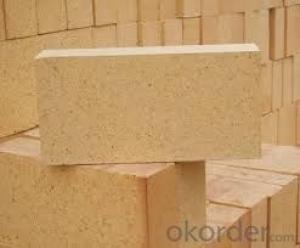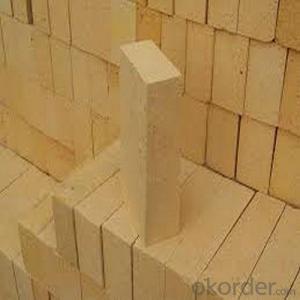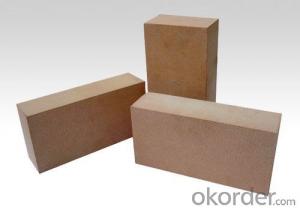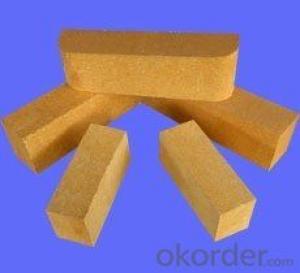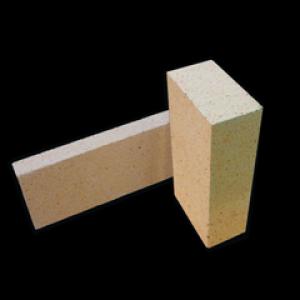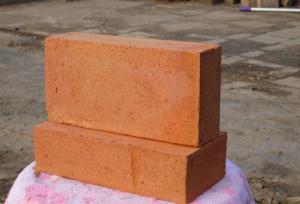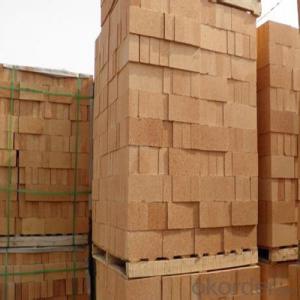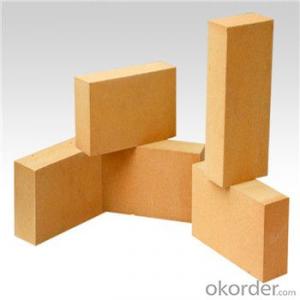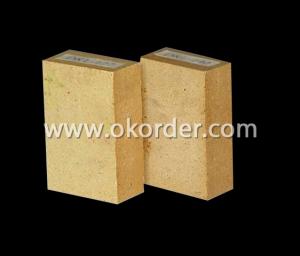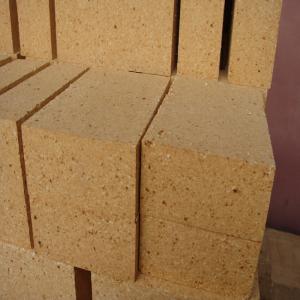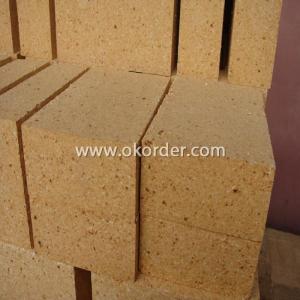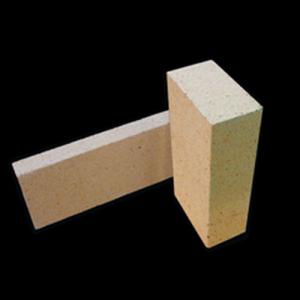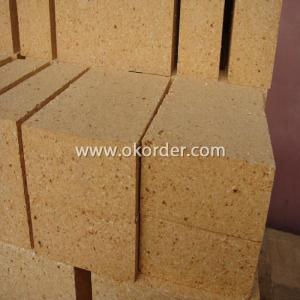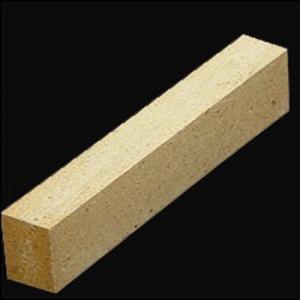Fireclay Brick - Low Porosity
- Loading Port:
- China Main Port
- Payment Terms:
- TT OR LC
- Min Order Qty:
- -
- Supply Capability:
- -
OKorder Service Pledge
OKorder Financial Service
You Might Also Like
CNBMis the specialized manufacturer and supplier of refractory in China, Our products mainly include refractory bricks, refractory castable, refractory precast shape, insulating brick etc. For refractory castable and precast shape they are very popular in the Europe, North American area.
Advantage:
This series of products are made of super calcined flint clay and calcined bauxite, with high pressure formed and high temperature sintered. Due to its low apparent porosity, strong resistance to erosion and high refractoriness under load, they are wildly used in various furnaces, especially suitable to the middle and low parts of regenerator in glass furnaces.
Features:
1. Low bulk density, low thermal conductivity, good thermal performance.
2. Refractory category allow direct contact of fire, suitable for various atmosphere
3. Good integrity with furnace lining, long service life, easy operation, could be shaped freely
Typical Applications:
1. Furnaces of metallurgy industry, heat treatment furnace
2. Furnaces of chemical industry and construction industry.
3. Furnace of incineration of garbage, recirculating fluidized bed furnace
Specification:
Low Porosity Fireclay Brick
Index | Low Porosity Fireclay Products | |||
DN-10 | DN-12 | DN-15 | DN-18 | |
AL2O3 % ≥ | 45 | 45 | 42 | 42 |
Fe2O3 % ≤ | 1.00 | 1.20 | 1.65 | 1.80 |
Bulk Density≥ g/cm3 | 2.40 | 2.35 | 2.30 | 2.25 |
A.P. % ≤ | 10 | 12 | 15 | 18 |
C.C.S (Mpa) ≥ | 70 | 65 | 60 | 48 |
Refractoriness ≥ °C | 1750 | 1750 | 1750 | 1750 |
Reheating Linear Change% | 1400°C×2h -0.1~+0.05 | 1400°C×2h -0.1~+0.05 | 1400°C×2h -0.2~0 | 1400°C×2h -0.4~0 |
0.2mpa Refractoriness under loadT0.6 ≥ °C | 1500 | 1470 | 1450 | 1400 |
- Q: What's the reason of cracks in refractory bricks?
- If it is made to refractory bricks,dry in the air naturally for 10 days, then put into the drying furnace, which is certainly better than the brick is put to the furnace directly, this is not easy to crack. After all, the moisture of brick will run in the air. See the semi-finished products (not crack is really no crack), but after drying, it has cracks, this is must because moisture runs quickly in a short time. If it cracks after high temperature heat treatment, the reason is very complicated, such as after high temperature burning, temperature decreases too fast, resulting in a large temperature change, then it cracks. Or in the process of high temperature heat treatment, the internal reaction is intense, and generate some volume expanding materials, resulting in cracks and so on. Mullite Petrochemical reaction, spinel reaction and so on, the reactions of a lot of materials are the volume expansion
- Q: Can refractory bricks be used when it cracks for 1cm
- 3, If the crack is caused by burning or drying, then it can't be used. While if the carck is caused by refractory brick molding, it still can be used. 4, the crack is caused by refractory bricks raw materials.
- Q: What to do if refractory bricks saltpeter when they are used outdoor
- Efflorescence is usually dialysised from brickwork joints, dealing with the gap is ok These white substaince inside the pan tile: Cement efflorescence efflorescence is wow cake section from light leather intestinal common disease inumiya Hua building surface, according to their different causes and manifestations, there is pan cream, white, whitening, cream, on the walls and decorative surface erosion and other names, is the change of soluble saline alkali soil, adobe, brick, cement, mortar, concrete, masonry, ceramic tile, paint and other building materials with temperature, humidity and other external environment, in a water absorption, water transfer, water evaporation process with physical and chemical changes of the original building material damage disease phenomenon, erosion degree also has the very big difference there is a common, get damp, foaming, powder, drum, hollowing, cracking, spalling, mildew and crystallization phenomenon. Cement efflorescence may have some relationship with the quality of the cement, sand, water, air, temperature, humidity, it is a common fault in building. Use cement to do the pebble shape, it also prones to the above problems: A layer of white stuff on the surface. Terms of settlement: Scrape the dust in brickwork joint, pointing again. Use special pointing agents, more resistant to corrosion, not easy to efflorescence.
- Q: How to wipe off the white paint on the refractory brick (red).
- Wallpaper knife should be ok
- Q: What are needed to make refractory bricks with micro silica?
- Micro silicon powder is used in mortar and concrete, the ore-smelting electric furnace produces a large amount of strongly volatile gases SiO2 and Si, bridges, seaports. It is ferroalloy. When smelt ferrosilicon and industrial silicon (metallic cilicon), micro silicon power is also called silica fume or condensed silica fume, dam, gas emissions and air condensate and deposit by rapid oxidation, water conservancy, airport runway, tunnel, high-rise buildings, subway, railway, highway and culvert. Application fields of silicon power are cement concrete pavement and mine roadway anchor reinforcement and etc.
- Q: How many squares of a ton refractory bricks?
- About 2 tons , general one square clay brick is about 2 tons, from 2, one square corundum brick or magnesia bricks can reach 3 tons, it should say one square is how many tons. if it is high aluminum, then see the content of aluminum. It mainly sees what refractory bricks, because the volume and density of refractory bricks are relatively large.2 tons to 2
- Q: Are refractory bricks poisonous?
- Zirconium minerals are often associated with other minerals in the mining, because the bricks are basically burned under more than 1 thousand degree. But some of the bricks contain heavy metal elements chromium. Some of the brick contains zirconium, the vast majority are very safe, and heavy metal elements have a certain toxicity, there are many kinds of refractory bricks that the nature is very stable, and the associated minerals are generally radioactive
- Q: 1200 degrees inside the furnace, lay a layer of refractory brick, what is the temperature outside?
- except refractory brick, refractories include refractory concrete (refractory cement+aggregate), fire-resistant insulating layer (refractory cement+vermiculite powder or refractory cement + diatomaceous earth) and so on.
- Q: Which is the higher price of concrete solid brick and MU15 fired common brick (non clay brick)?
- The price of concrete solid bricks and the price of MU10 bricks are on the same level, and the difference will not exceed two cents a penny. It should be MU15 sinter ordinary brick is more expensive.
- Q: what type of refractory bricks does TZ-3 stands for ?
- Standard brick
Send your message to us
Fireclay Brick - Low Porosity
- Loading Port:
- China Main Port
- Payment Terms:
- TT OR LC
- Min Order Qty:
- -
- Supply Capability:
- -
OKorder Service Pledge
OKorder Financial Service
Similar products
Hot products
Hot Searches
Related keywords
